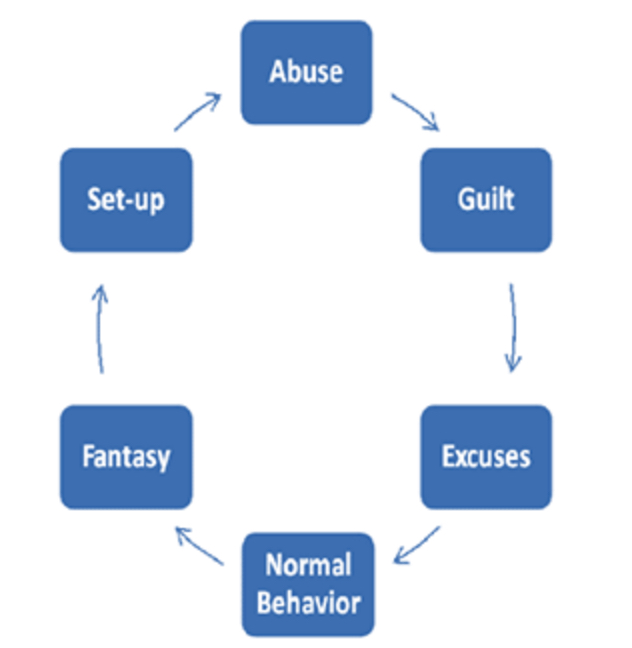The signs of violence
Recognizing abuse is the first step in getting help for yourself or someone you know.
Domestic abuse doesn’t just mean causing physical pain. It can be emotional, sexual and economic in nature as well. It can be caused by a husband, or other relative. Similar abuse also happens in dating relationships. Learn to spot it, so you can end it!
Domestic abuse, also known as spousal abuse, occurs when one person in an intimate relationship or marriage tries to dominate and control the other person. Domestic abuse that includes physical violence is called domestic violence.
Domestic violence and abuse are used for one purpose and one purpose only: to gain and maintain total control over you. An abuser doesn’t “play fair.” Abusers use fear, guilt, shame, and intimidation to wear you down and keep you under his or her thumb. Your abuser may also threaten you, hurt you, or hurt those around you.
Domestic violence and abuse does not discriminate; it occurs within all age ranges, ethnic backgrounds, and economic levels. And while women are more commonly victimized, men are also abused—especially verbally and emotionally, although sometimes even physically as well. The bottom line is that abusive behavior is never acceptable, whether it’s coming from a man, a woman, a teenager, or an older adult. You deserve to feel valued, respected, and safe.
Domestic abuse often escalates from threats and verbal abuse to violence. And while physical injury may be the most obvious danger, the emotional and psychological consequences of domestic abuse are also severe. Emotionally abusive relationships can destroy your self-worth, lead to anxiety and depression, and make you feel helpless and alone. No one should have to endure this kind of pain—and your first step to breaking free is recognizing that your situation is abusive. Once you acknowledge the reality of the abusive situation, then you can get the help you need.
Signs of an abusive relationship
There are many signs of an abusive relationship. The most telling sign is fear of your partner. If you feel like you have to be on your guard around your partner—constantly watching what you say and do in order to avoid a blow-up—chances are your relationship is unhealthy and abusive. Other signs that you may be in an abusive relationship include a partner who belittles you or tries to control you, and feelings of self-loathing, helplessness, and desperation.
To determine whether your relationship is abusive, answer the questions below. The more “yes” answers, the more likely it is that you’re in an abusive relationship.
Signs that you’re in an abusive relationship:
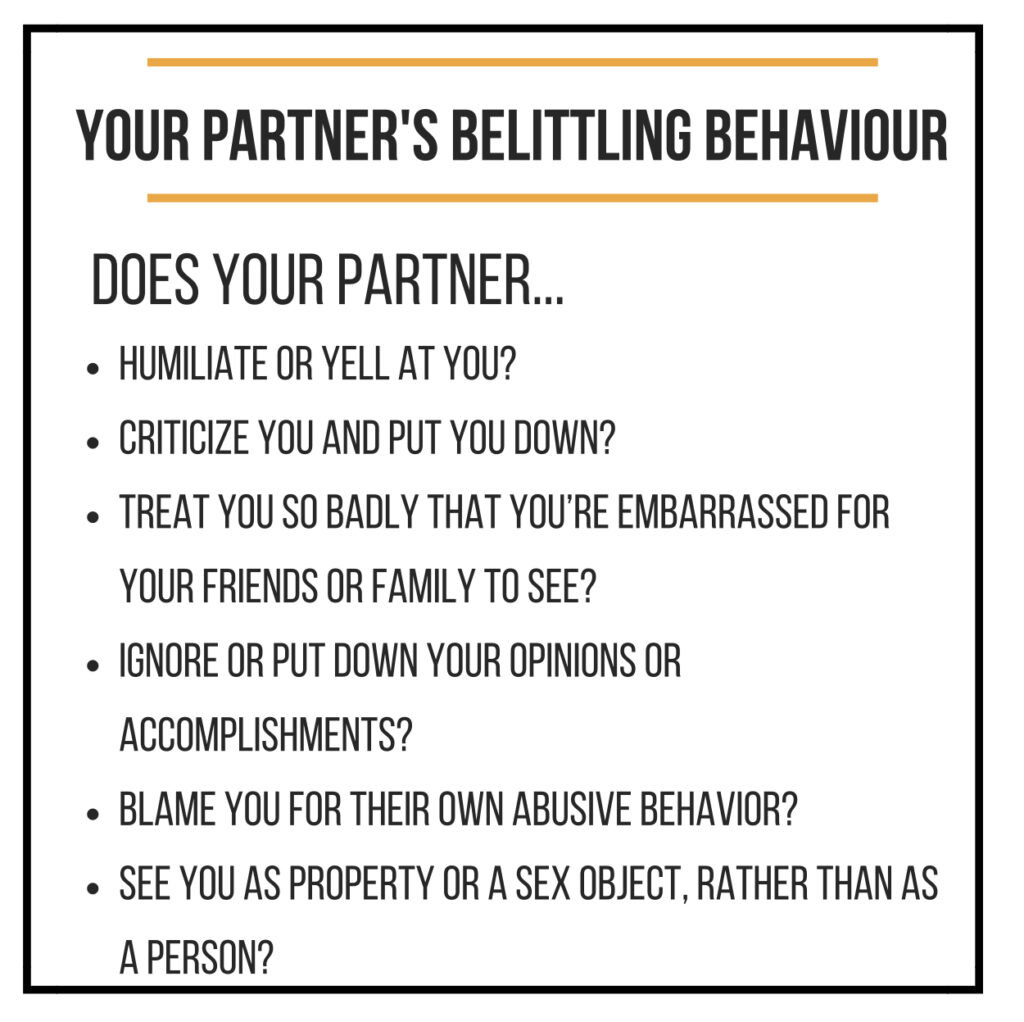
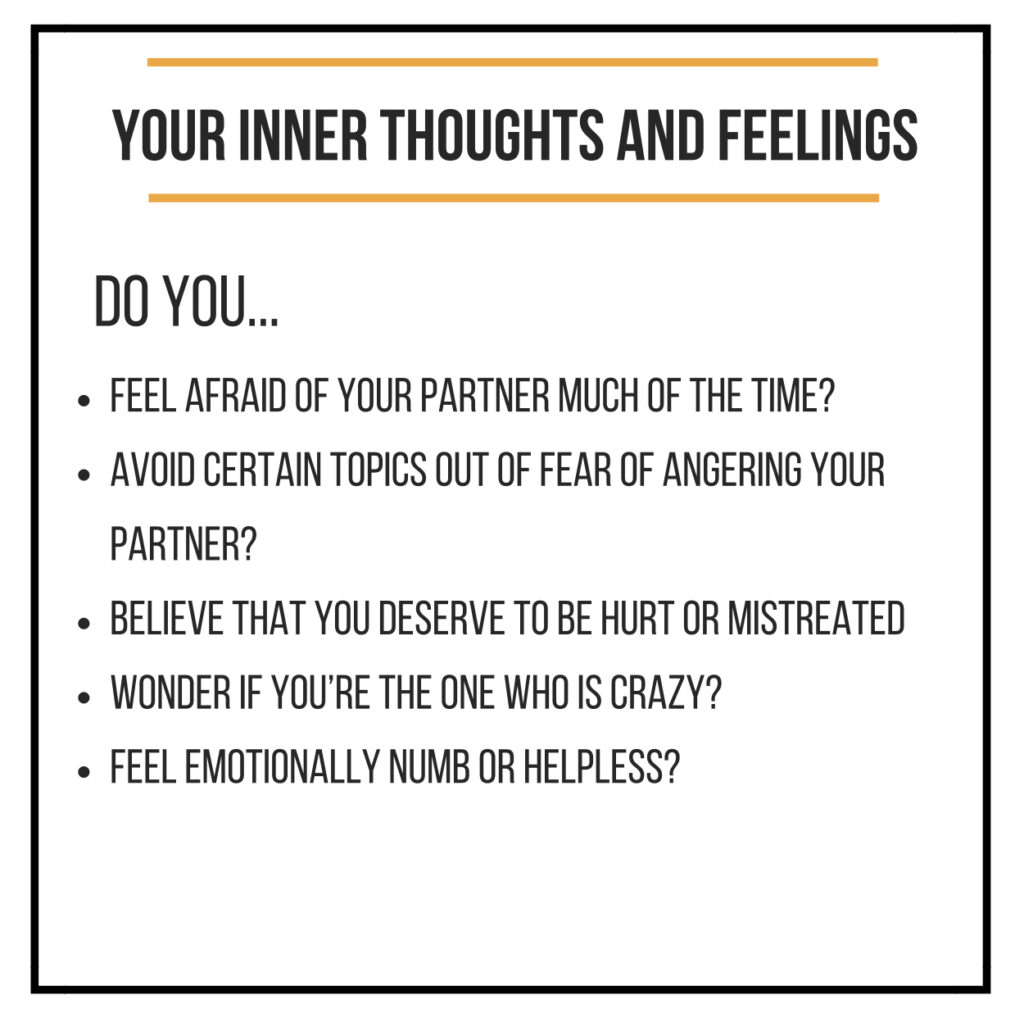
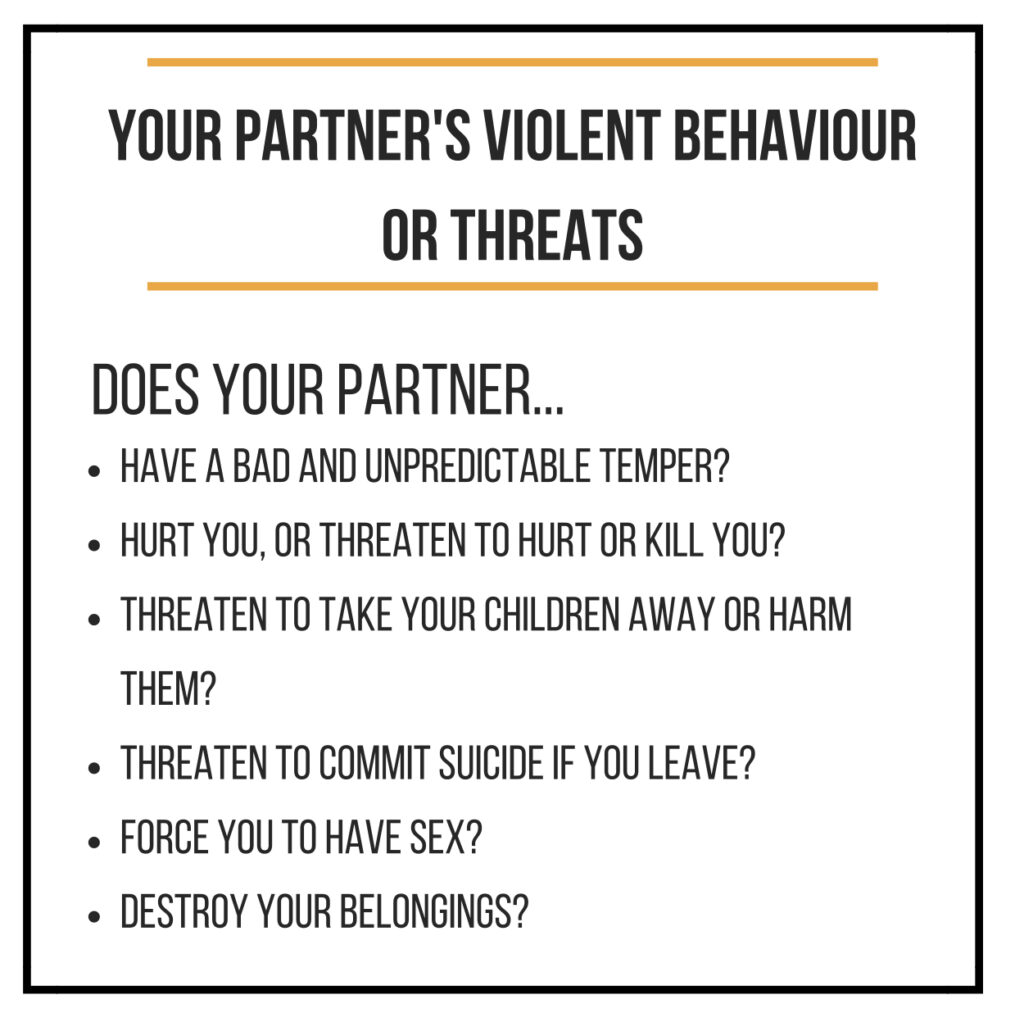
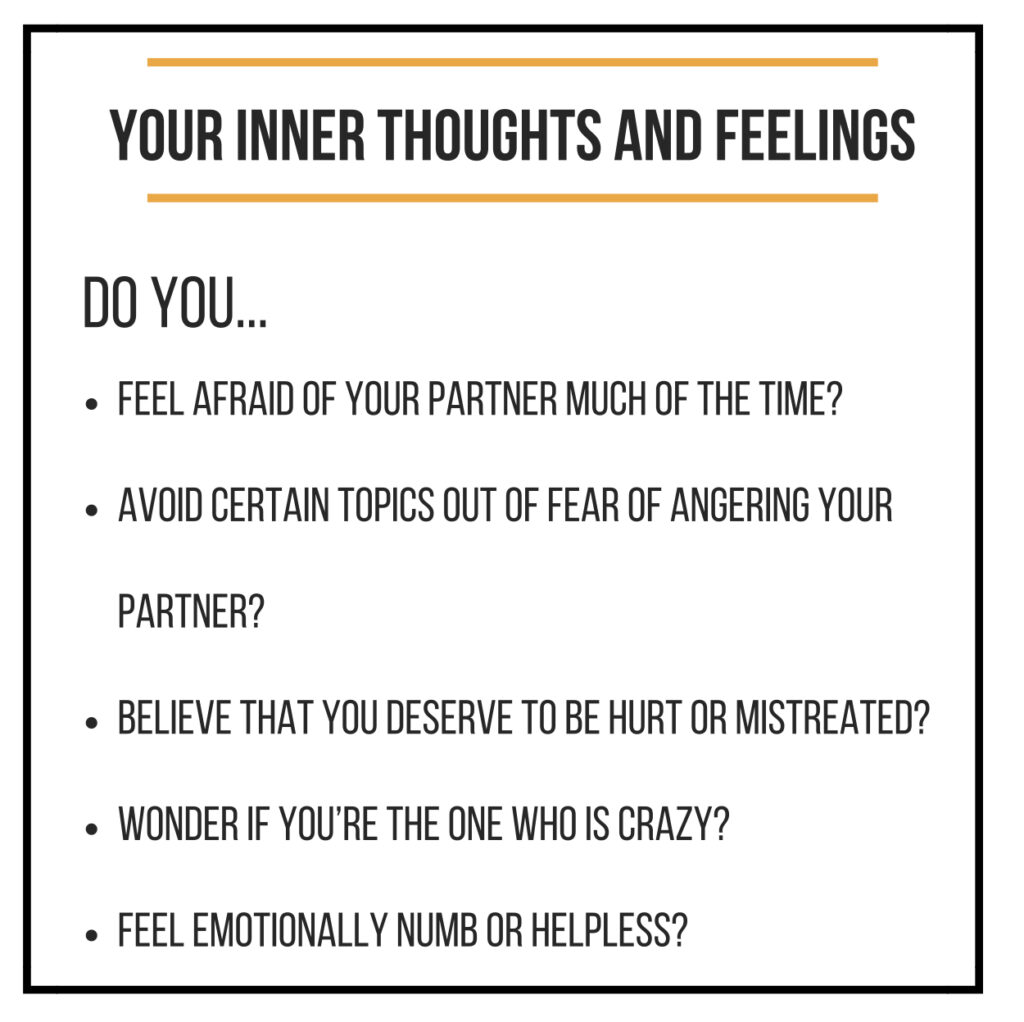
Physical abuse and domestic violence
When people talk about domestic violence, they are often referring to the physical abuse of a spouse or intimate partner. Physical abuse is the use of physical force against someone in a way that injures or endangers that person. Physical assault or battering is a crime, whether it occurs inside or outside of the family. The police have the power and authority to protect you from physical attack.
Sexual abuse is a form of physical abuse
Any situation in which you are forced to participate in unwanted, unsafe, or degrading sexual activity is sexual abuse. Forced sex, even by a spouse or intimate partner with whom you also have consensual sex, is an act of aggression and violence. Furthermore, people whose partners abuse them physically and sexually are at a higher risk of being seriously injured or killed.
It is still abuse if…
Source: Breaking the Silence Handbook
Emotional abuse: It’s a bigger problem than you think
When people think of domestic abuse, they often picture battered women who have been physically assaulted. But not all abusive relationships involve violence. Just because you’re not battered and bruised doesn’t mean you’re not being abused. Many men and women suffer from emotional abuse, which is no less destructive. Unfortunately, emotional abuse is often minimized or overlooked—even by the person being abused.
Understanding emotional abuse
The aim of emotional abuse is to chip away at your feelings of self-worth and independence. If you’re the victim of emotional abuse, you may feel that there is no way out of the relationship, or that without your abusive partner you have nothing.
Emotional abuse includes verbal abuse such as yelling, name-calling, blaming and shaming. Isolation, intimidation, and controlling behavior also fall under emotional abuse. Additionally, abusers who use emotional or psychological abuse often throw in threats of physical violence or other repercussions if you don’t do what they want.
You may think that physical abuse is far worse than emotional abuse, since physical violence can send you to the hospital and leave you with scars. The scars of emotional abuse are very real, though, and they run deep. In fact, emotional abuse can be just as damaging as physical abuse—sometimes even more so.
Economic or financial abuse: A subtle form of emotional abuse
Remember, an abuser’s goal is to control you, and he or she will frequently use money to do so. Economic or financial abuse includes:
Violent and abusive behavior is the abuser’s choice
Despite what many people believe, domestic violence and abuse is not due to the abuser’s loss of control over his or her behavior. In fact, abusive behavior and violence is a deliberate choice made by the abuser in order to control you.
Abusers use a variety of tactics to manipulate you and exert their power:
Abusers are able to control their behavior - they do it all the time
The cycle of violence in domestic abuse
Domestic abuse falls into a common pattern, or cycle of violence:
